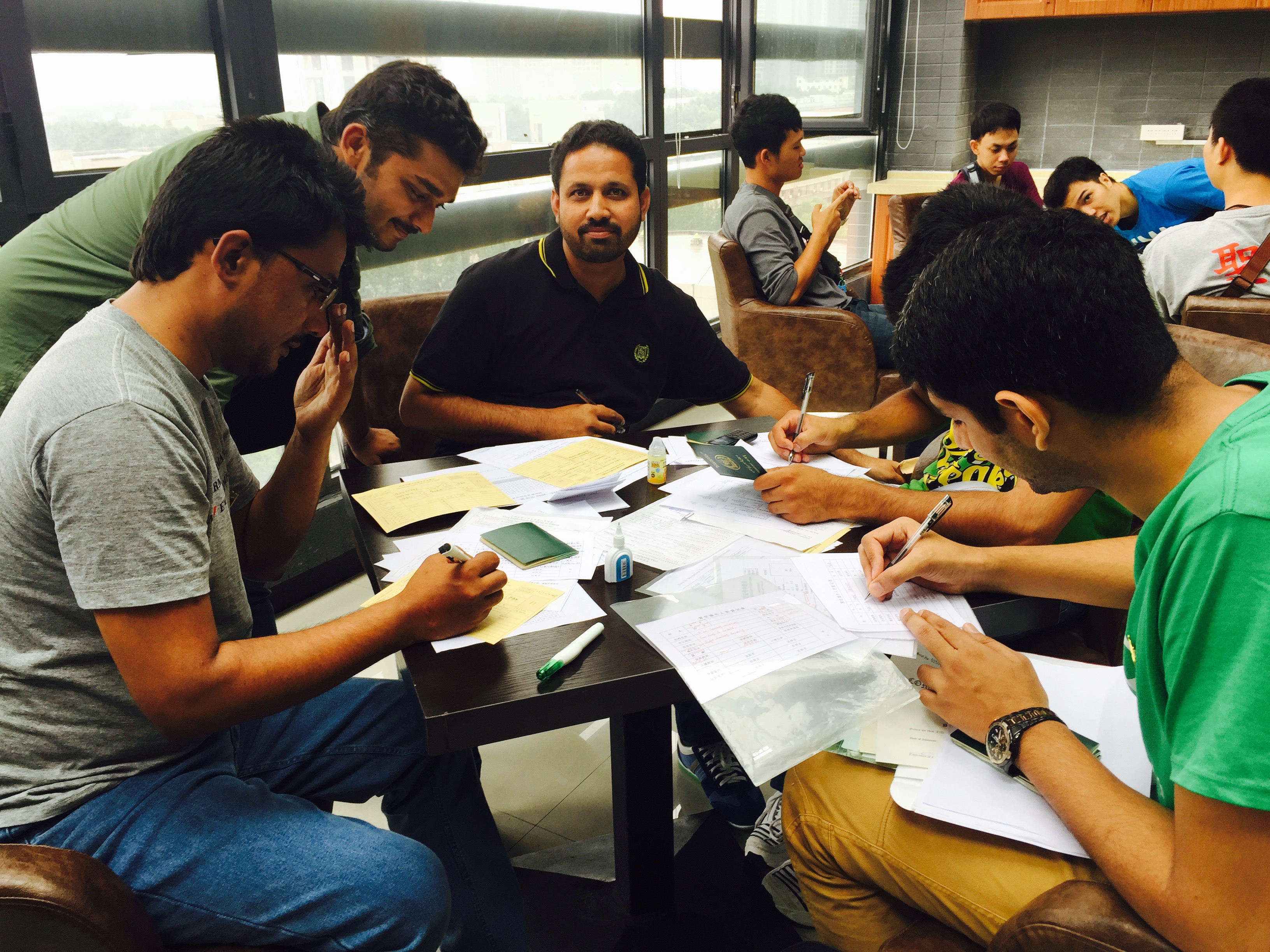Silk Road schools cement bonds of partnership

Students from Pakistan and other countries enroll in Xi'an Jiaotong University in September 2015. In spring of last year, Xi'an Jiaotong University proposed the establishment of the Universities Alliance of the New Silk Road. The executive council for the alliance met for the first time from April 8 to 9 at the university, where a consensus was reached on expanding student exchanges and strengthening scientific cooperation.
The executive council that governs the Universities Alliance of the New Silk Road met for the first time from April 8 to 9 at Xi'an Jiaotong University, where representatives from 18 member universities reached a consensus on expanding student exchanges and strengthening scientific cooperation.
Established in spring of last year, the alliance was proposed by Xi'an Jiaotong University with the aim of promoting close cooperation among universities along the routes of the Silk Road Economic Belt in various fields, including talent cultivation, scientific research, cultural communication and health services. Culture and education are two key components of the “Belt and Road” initiative, and a total of 125 universities from 30 countries and regions have joined the alliance so far.
Some scholars in attendance said the alliance promotes dynamic cooperation in such fields as scientific innovation and green development among universities from nations along the routes of the Silk Road as well as between these universities and those from developed countries.
The executive council advised member universities to improve the institutional construction and operational mechanisms of the alliance through consultation and negotiation. It also called for various forms of joint education and strengthening mutual learning to enrich cultural exchanges while expanding the breadth and depth of cooperation for mutual benefit.
Wang Shuguo, president of Xi'an Jiaotong University, said his school would like to cooperate with others at home and abroad to cultivate a variety of professionals needed for the construction of the “Belt and Road” while providing talent for spreading Chinese culture, education and technology along the routes.
During the conference, presidents and representatives from 102 elite foreign universities and 32 renowned domestic universities also gathered at Xi'an Jiaotong University for a global university summit, where they exchanged views on the mission of universities as well as opportunities and challenges in the information age and the mobility of high-caliber personnel.
In his speech, Wang pointed out that with social progress and development, people around the world face common challenges. Universities should work together to find solutions, he said, adding that those in academia should explore ways to strengthen higher education’s role in guiding social development.
In the 19th century, research universities were instrumental in pushing forward the rapid advancement of science and technology, and in the first few decades of the 21st century, higher education has received unprecedented attention. However, research universities around the world continue to grapple with obstacles standing in the way of human progress.
Giovanni Azzone, president of the Polytechnic University of Milan, said the challenges in the 21st century are problems that affect all of humanity, whether one is speaking of the relationship between man and nature or that between man and man. He said economic globalization has given universities a mission to jointly solve global problems by strengthening collaboration, building alliances and providing platforms for think tank cooperation.
Mark Wrighton, chancellor of Washington University in Saint Louis, said research universities have long provided solutions to society’s problems. At present, the world is facing energy scarcity, threats to security as well as economic, financial and demographic challenges. These issues require universities to make breakthroughs to bring about harmony between science and nature, which cannot be realized by any single university, he said. The Universities Alliance of New Silk Road offers a good model, he said.
Over the course of human history, a variety of ethnic groups have emerged, each with its own history, culture, politics and beliefs. Moreover, the advancement of science and technology as well as economic globalization has facilitated the mobility of people. However, cultural and identity differences have led to conflicts and confrontations among different civilizations, threatening the relationship between man and man. Zhou Xingyi, president of Taiwan’s Chengchi University, said cultural diversity is driving the rapid flow of talent, and adaptation to a pluralistic culture should be made a focus of modern education.
Lu Hang and Shu Jianjun are reporters at the Chinese Social Sciences Today.
